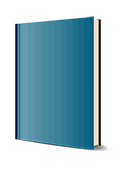Defects in Solids
Special Topics in Inorganic Chemistry

1. Edition October 2008
552 Pages, Hardcover
Wiley & Sons Ltd
Short Description
Defects in Solids covers the basic concepts and principles in the chemistry and physics of defects, helping readers understand how to manipulate defects in a material so as to endow it with new and desirable properties (defect engineering). Emphasis is placed on linking principles to real-world processes and applications. Cutting-edge applications (including high-temperature ceramic semiconductors, solid-state batteries, fast-ion conductors, fuel cells, and sensors) are covered. With questions, problems, and exercises, this is a great text for upper-level undergraduate and graduate students. It's also a practical reference for researchers.
A comprehensive overview of defects in solids
Defects play an important part in defining both the chemical and physical behavior of a material. In fact, the manipulation of defects underlies the development of the modern silicon-based computer industry, solid-state lasers, battery science, solid oxide fuel cells, hydrogen storage, and display technologies. This guide describes defects, how they form, and how they influence physical properties in order to help scientists manipulate them in the development of new or improved materials. Including an introduction and advanced applications, Defects in Solids:
* Covers the basic concepts in the chemistry and physics of defects
* Links principles to real-world applications
* Covers cutting-edge applications, including solid-state batteries, fast-ion conductors, fuel cells and sensors, and cuprate superconductors
* Includes detailed chapters on: point defect chemistry; linear and planar defects; nonstoichiometry and crystal structure; diffusion in solids; ionic conductivity; intrinsic and extrinsic electronic conductivity; and magnetic and optical defects
* Features introductory questions at the beginning of each chapter to help readers focus, plus end-of-chapter questions
With a strong emphasis on areas of recent research that represent exciting frontiers, this is a great resource for academic and industrial researchers in materials engineering, semiconductors, information storage and transmission, LCD technologies, and related fields. It's also an excellent text for upper-level undergraduate and graduate students in materials science and engineering, solid-state chemistry and physics, and inorganic chemistry.
1. Point Defects.
Problems and Exercises.
References.
Further Reading.
2. Intrinsic Point Defects in Stoichiometric Compounds.
Problems and Exercises.
References.
Further Reading.
3. Extended Defects.
Problems and Exercises.
Further Reading.
4. Structural Aspects of Composition Variation.
Problems and Exercises.
Further Reading.
5. Defects and Diffusion.
Problems and Exercises.
Further Reading.
6. Intrinsic and Extrinsic Defects in Insulators: Ionic Conductivity.
Problems and Exercises.
Further Reading.
7. Nonstoichiometry and Intrinsic Electronic Conductivity.
Problems and Exercises.
References.
Further Reading.
8. Nonstoichiometry and Extrinsic Electronic Conductivity.
Problems and Exercises.
Further Reading.
9. Magnetic and Optical Defects.
Problems and Exercises.
Further Reading.
Supplementary Material.
S1 Crystal Structures.
Further Reading.
S2 Band Theory.
S3 Seebeck Coefficient.
S4 Schottky and Frenkel Defects.
S5 Diffusion.
S6 Magnetic Properties.
Answers to Problems and Exercises.
Formula Index.
Subject Index.


